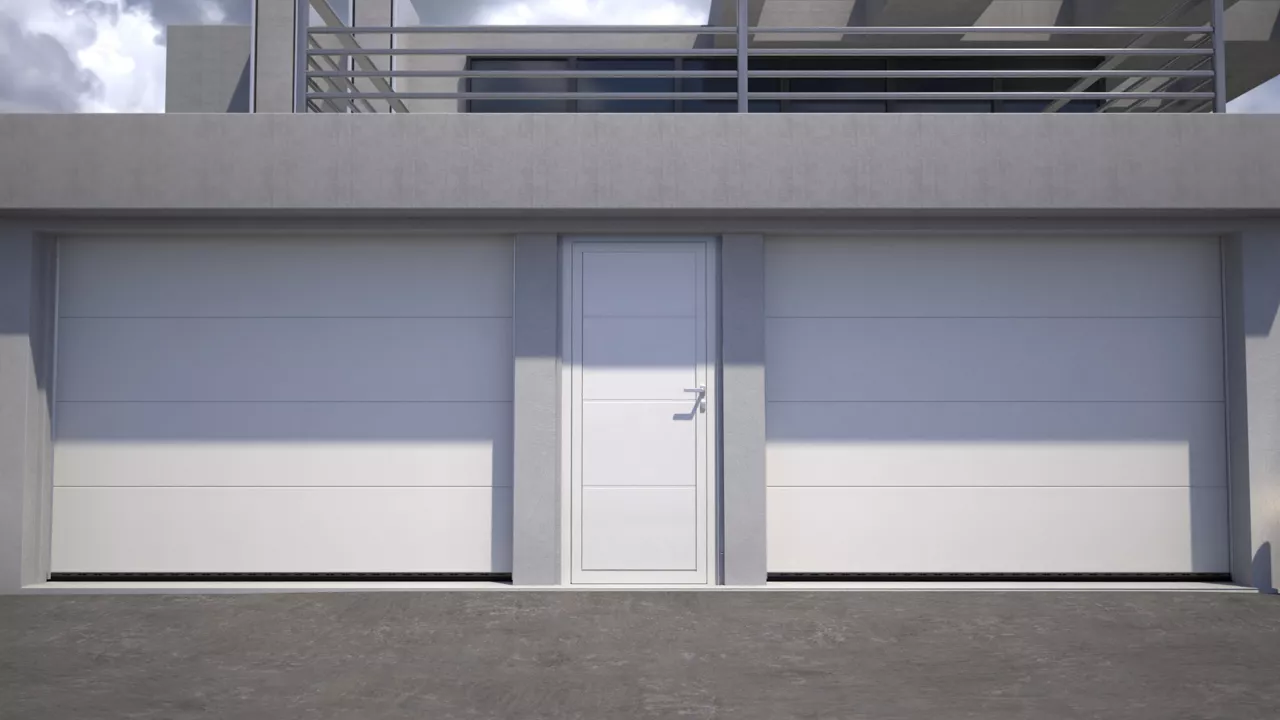
Garage Doors and Parts – Garage door style plays a crucial role in shaping the overall look of a home. Homeowners often overlook this element, but the right door can completely transform the front facade. Whether the house follows a minimalist aesthetic or embraces something more experimental, the garage door must complement it seamlessly. Minimalist homes tend to favor clean lines and flat panels, often painted in neutral colors to blend into the architecture. On the other hand, futuristic homes benefit from bolder approaches, such as metallic finishes or geometric surface textures. Garage doors serve not only as functional elements but also as large visual statements. A mismatched design can create aesthetic dissonance while a harmonious garage door style can enhance a home’s curb appeal. More homeowners are now viewing this upgrade as an investment in architectural coherence. In a neighborhood where first impressions count, the garage door can either elevate or diminish the visual appeal.
Garage door style should be carefully matched with the overall architectural style of the home. For example, a classic colonial house looks best when paired with a carriage-style garage door featuring raised panels and hardware accents. Meanwhile, a home with industrial design influences often incorporates rugged finishes, exposed materials, and doors made from steel or raw wood. A futuristic property might use glass, carbon composites, or brushed aluminum with LED highlights. Each of these choices must reflect the home’s identity without overpowering it. Garage door style must not only be visually aligned but also constructed with materials that support the design narrative. For instance, a contemporary home that emphasizes eco-conscious living might choose a door made from sustainable or recycled materials. Choosing the right garage door helps the home stand out for the right reasons while increasing its harmony with the surrounding environment and neighboring structures.
“Read about: PVC vs Fiberglass Garage Doors: Which One Will Transform Your Home?”
Color plays a significant role in establishing the visual mood of a garage door. While white and gray are popular for modern homes, darker shades like matte black or navy can offer a dramatic and elegant feel. Futuristic homes sometimes experiment with reflective or metallic coatings to catch light in unique ways. On the other hand, classic homes might lean toward wood stains and warm tones that echo traditional craftsmanship. Finishing textures such as gloss, satin, or matte can significantly change how the door interacts with sunlight and shadows throughout the day. Whether a home uses stone, brick, glass, or concrete in its build, the garage door’s color and finish must support the entire palette. Even subtle patterns, such as horizontal grooves or chevron panels, can enhance the door’s visual impact. A carefully chosen finish transforms the door from a simple utility object into a curated design element.
“Read more: This Ancient Chinese New Year Dish Will Blow Your Mind, Shark Fin Soup Recipe Inside!”
Today’s garage doors must deliver more than beauty. They need to offer insulation, smart controls, weather resistance, and low maintenance, all while maintaining aesthetic integrity. Homeowners often prioritize features like quiet operation, built-in security systems, and energy efficiency. However, these functions must not interfere with the design. Thankfully, the market now provides models that blend both effortlessly. Smart garage doors, for example, allow remote control via phone apps and integrate with home security platforms. But the external view can still showcase wood grain finishes or architectural glass panels that maintain visual consistency with the house. For minimalist homeowners, simplicity in mechanics and visuals is key. Meanwhile, futuristic style enthusiasts might welcome automated sliding or folding doors that open with sensor motion. Each design direction requires careful planning so that performance supports appearance, and vice versa. Beauty should never come at the expense of utility in modern garage door design.
Once considered purely utilitarian, garage doors are now viewed as focal points that can enhance or define a home’s visual identity. The large surface area makes them prime real estate for creative expression. Architects and designers often use the garage door as a canvas to reflect or contrast surrounding elements. A futuristic home may treat the door like a tech-forward statement with lighting elements or motion-based animation. In contrast, a minimalist approach often strips it down to its purest form, letting the smooth surface or subtle materials speak for themselves. The garage door becomes the transition between private and public space and can symbolize the personality of the homeowners. Whether crafted from cedar planks or aluminum sheets, the material and style should evoke intention. By treating the garage door as part of the home’s art direction, residents can elevate their entire property’s character and appeal.
This website uses cookies.